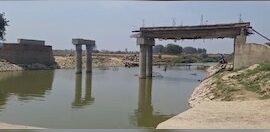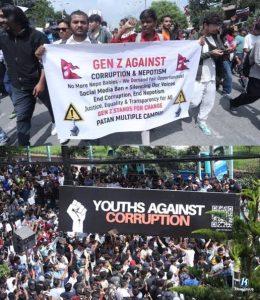In an inspiring tale of resilience, collective will, and grassroots action, the villagers of Kyampur Chhavni in Ghazipur district, Uttar Pradesh, have taken destiny into their own hands. After waiting for over 58 years for a government-constructed bridge over the Magai River, the villagers resorted to crowdfunding and began constructing it themselves.
This story is not just a reflection of administrative apathy—it is a shining example of civic engagement, community leadership, and the power of unity in rural India.
For decades, the Magai River stood as a barrier between Kyampur Chhavni and basic public services like education, healthcare, and markets. During the monsoon, the river would swell, cutting off access entirely. Schoolchildren often had to wade through water or take long detours. In emergencies, reaching a hospital became a perilous task.
Despite repeated representations to successive governments and promises made by politicians during election seasons, the bridge remained a dream.
Fed up with broken promises, the villagers decided to act. In early 2025, the residents of Kyampur Chhavni and nearby villages initiated a crowdfunding campaign. Contributions poured in—not just from locals, but from those who had migrated to cities and even abroad.
With funds and materials pooled together, the villagers began construction of a concrete bridge, using locally available expertise. Youth groups, women’s collectives, and even elderly residents participated in this historic initiative.
The Kyampur Chhavni bridge is more than a physical structure—it symbolizes a community’s rejection of prolonged state inaction. While the
73rd and 74th Constitutional Amendments were meant to empower local self-governance, this case exposes the yawning gap between decentralization in theory and its implementation on the ground.
ABOUT MAGAI RIVER:
- Location: Flows through eastern Uttar Pradesh, mainly in Ghazipur, Mau, and Ballia districts.
- Tributary: Part of the Ghaghara-Ganga river system.
- Length & Size: A minor river in terms of volume but significant for local communities.
- Agricultural Importance: Provides irrigation for paddy and vegetable cultivation.
- Seasonal Impact: Prone to monsoon flooding, affecting transportation and daily life.
- Connectivity Issues: Lack of bridges has historically isolated villages during floods.
- Recent Development: Villagers of Kyampur Chhavni crowdfunded and began building a bridge after waiting 58 years for government action.
- Symbolic Significance: Highlights governance gaps and the power of community-led initiatives in rural India
- The Magai region is famous for its pan (betel) leaf cultivation.
- Plays a crucial role in rural connectivity and agriculture in eastern UP.



